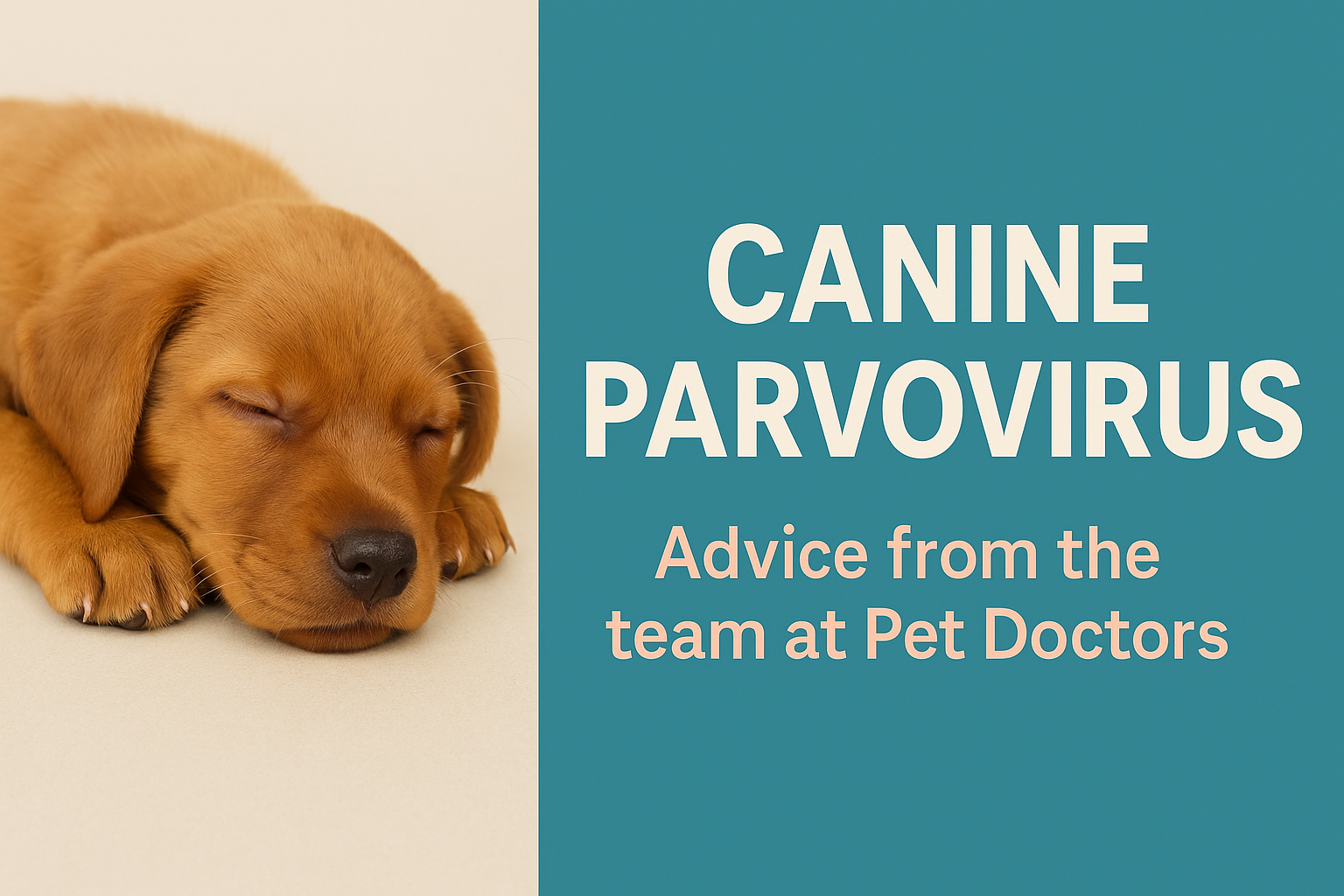
Canine Parvovirus (CPV) is a highly contagious and often fatal viral disease affecting dogs, particularly puppies. It is caused by a small, single-stranded DNA virus from the Parvoviridae family. Since its emergence in the 1970s, CPV has evolved into several variants: CPV-2a, CPV-2b, and CPV-2c. The virus spreads primarily via the fecal-oral route and can persist in the environment for months, necessitating strict hygiene and biosecurity protocols.
CPV targets rapidly dividing cells, including those in the intestines, bone marrow, and lymphoid tissues, resulting in severe enteritis, immunosuppression, and systemic illness. Diagnosis includes clinical assessment, fecal ELISA, and PCR testing. While there is no direct antiviral treatment, aggressive supportive care—including IV fluids, antiemetics, antibiotics, and nutritional support—is essential. New therapies like CPV monoclonal antibodies (CPMA) have significantly improved outcomes.
Vaccination remains the most effective preventive measure. Comprehensive immunization programs, public awareness, and environmental sanitation are vital to controlling CPV.
Canine Parvovirus (CPV), commonly known as “parvo,” is a severe and highly infectious disease of dogs. Classified under the genus Protoparvovirus, the virus is particularly resilient in the environment, surviving heat, cold, and common disinfectants. CPV mainly affects puppies between 6 to 20 weeks old and unvaccinated dogs.
These variants show minor differences in the VP2 capsid protein, affecting host range and immune response.
Primary hosts include domestic dogs and wild canids. Other mammals like raccoons and skunks can also be infected. Some CPV strains have even affected felines.
CPV is mainly transmitted via the fecal-oral route. Infected dogs shed the virus in their feces before and after showing symptoms. The virus can also spread through contaminated objects (fomites) like bedding, toys, and human clothing.
After entering the body, CPV first replicates in the lymphoid tissues. It then spreads systemically, targeting cells in:
There is no specific antiviral for CPV. Treatment focuses on supportive care:
Awareness about symptoms, vaccinations, and hygiene practices is essential.
Canine Parvovirus poses a serious threat to dog populations globally. With no specific cure, prevention through vaccination, biosecurity, and public awareness remains the best defense. Early diagnosis and aggressive supportive care are key to reducing mortality. Emerging therapies like CPMA offer new hope for improving survival and recovery outcomes. Pet owners, breeders, and veterinarians must collaborate to ensure widespread protection against this deadly virus.

Prioritize your pet's well-being with our thorough Health Checkup, ensuring early detection and proactive care for a happy and healthy life.

Indulge your pet in a grooming experience that goes beyond aesthetics, ensuring both style and well-being for a happy and healthy companion.

Trust us for comprehensive and compassionate pet care that prioritizes their well-being and happiness.

Unlock your pet's full potential with our professional pet training services, fostering a strong bond and well-behaved companion for a harmonious relationship.

Open your heart and home to a new furry friend through our pet adoption program, where love knows no bounds, and every adoption creates a forever home.

Explore a world of premium products at our Pet Store, where quality meets care, providing everything your furry friend needs for a happy and healthy life.

Our Expert Rich You Soon!
Our Expert Rich You Soon!